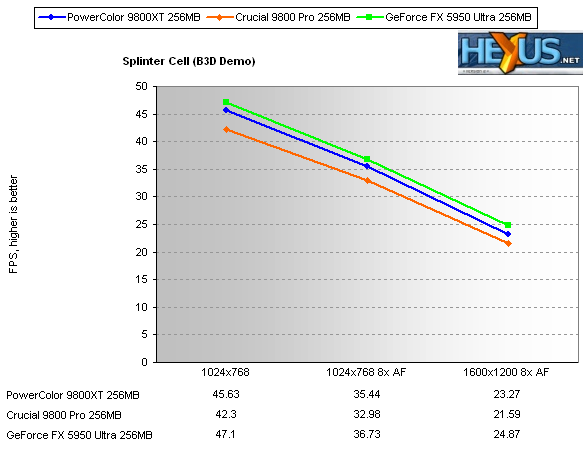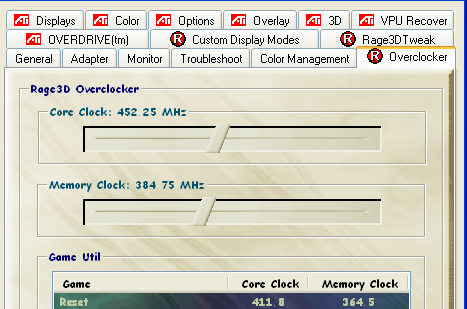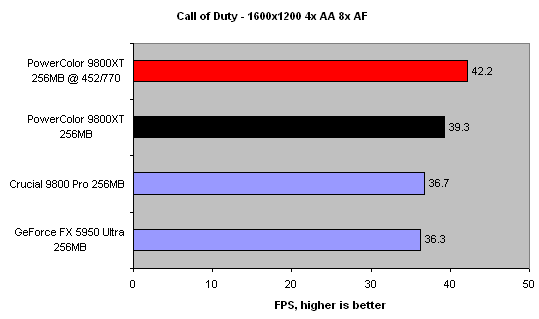Splinter Cell and overclocking
Splinter Cell- Author: UbiSoft
- DirectX Class 8.1
- Pixel and Vertex Shaders: Yes (PS1.1)
- No FSAA. AF set via control panel
- Beyond3D Caspian Demo

Splinter Cell isn't a fan of antialiasing. For the quality-based benchmarks it was run with 8x anisotropic filtering. PowerColor's 9800XT and the comparison GeForce FX 5950 Ultra slug it out for first place. It's not wholly surprising to see the NVIDIA card in the lead. Splinter Cell is an X-Box, and by inference a NVIDIA, port. No anomalies or rendering errors to report. Massive GPU shadow calculation forces each card to struggle when the resolution is increased to 1600x1200. Some users may question the need for accelerators with 30GB/s bandwidth allied to massive fillrate power. A number of our benchmarks became, for want of a better word, 'sticky' at 1024x768x32 4x AA / 8x AF. There's always demand for higher framerates.
Overclocking
Overclocking, if undertaken in a safe manner with due care, can provide tangible performance increases without losing graphical integrity. The PowerColor card is much like any other XT. It runs with a 412MHz engine and 730MHz memory clocks. Rage 3DTweak was used to increase both clocks until the card began to cause artifacts when running AquaMark3 at 1600x1200 with 4x AA and 8x AF. A final, stable figure of 452MHz core and 770MHz memory was achieved with excellent graphical stability.

As shown by the overclocking utility. A high-end card is under the greatest strain when both GPU and bandwidth are taxed heavily. That's why we're re-running AquaMark3 and Call of Duty with the overclocked card.

It requires an overclocked 9800XT to break to the 40FPS barrier. This is just an average. There are points in the timedemo when the action intensifies to push the card close to 20FPS. One can never have enough speed.

The same is even more applicable to AquaMark3. High resolutions, high degrees of complexity and a massive shader requirements ensures that the cards need all the help they can get.









